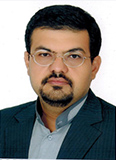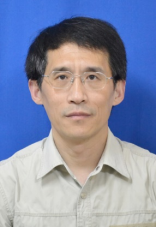
Prof.Ata Jahangir Moshayedi
Jiangxi University of Science and Technology, China

Title: Gas sensor Modeling from Simple Equation to Electronic Nose, Enose challenges
Abstract:
Gas sensors are among a wide range of sensors used in various applications from home to industry. Even more recently, in the form of electronic noses( E_nose), their use has been extended to identify those infected with the coronavirus. Sensor behaviour plays an important role in system modelling. Therefore, finding mathematical models which can describe the sensor response with maximum information over time in different environments and situations is necessary. One of the major tasks in this field is mathematical modelling, which has become increasingly complex over time. Unfortunately, most of the proposed equations fail to support actual performance and even make researchers increasingly confused. In this talk, we present brief modelling equations for metal oxides , based on practical observations and logs data extraction. A mathematical equation is proposed to reduce the model parameters according to changes in temperature, humidity, and gas density variation, which helps to simulate the sensor’s behaviour more accurately and, consequently, to draw a better short response.
Experience:
Dr Ata Jahangir Moshayedi, Associate professor at Jiangxi University of Science and Technology, China, PhD. In Electronic Science from Savitribai Phule Pune University, India,
IEEE member, Instrument Society of India as a Life Member, Lifetime Member of Speed Society of India, member of the editorial team of various conference and journals like; International Journal of Robotics and Control, JSME, Bulletin of Electrical Engineering and Informatics, International Journal of Physics and Robotics Applied Electronics, etc., 80 papers published in national journals and conferences, 2 books published, Owns 1 patent, 5 copyright.
His research interest includes: Robotics and Automation/ Sensor modelling /Bio-inspired robot, Mobile Robot Olfaction/Plume Tracking, Embedded Systems / Machin vision-based Systems/Virtual reality, Machine vision/Artificial Intelligence
Dr Moshayedi, Presently working on his AGV (Automated Guided Vehicles) designed model and Food delivery service robot at Jiangxi University, china.

Prof. Jiandong Hu
Henan Agricultural University, China

Title: Applications of Eigenvalues and Eigenvectors in Data Mining
Abstract:
Applied linear algebra methods play an important role in data science. Eigenvalues and eigenvectors are widely used in efficient algorithms for data mining, with applications in dimensionality reduction, image processing, facial recognition, and Internet search engine. In this study, we mainly discuss efficient algorithms in data mining field. Principal Component Analysis (PCA) uses eigenvalues and eigenvectors to re-express data in the form of a small number of actual data points. PCA is widely applied in image compression and facial recognition. PageRank, the Google search engine algorithm, is an eigenvector of a transformation matrix corresponding to the largest eigenvalue. The best solution for the decision vector for network classification is the feature vector of the Laplacian matrix corresponding to the second smallest eigenvalue
Experience:
Professor Shyi-Ming Chen received the Ph.D. degree in Electrical Engineering from National Taiwan University, Taipei, Taiwan, in June 1991. He is a Chair Professor in the Department of Computer Science and Information Engineering, National Taiwan University of Science and Technology, Taipei, Taiwan. From August 2007 to July 2010, he was the Dean of the College of Electrical Engineering and Computer Science, Jinwen University of Science and Technology, New Taipei City, Taiwan. From August 2011 to July 2012, he was the Vice President of the National Taichung University of Education, Taichung, Taiwan. He was the President of the Taiwanese Association for Artificial Intelligence (TAAI) from January 2005 to January 2009. He was the President of the Taiwanese Association for Consumer Electronics (TACE) from December 2008 to December 2012 and from December 2014 to December 2016. He has published more than 500 papers in referred journals, conference proceedings and book chapters. His research interests include Fuzzy Systems, Intelligent Systems, Knowledge-Based Systems, Neural Networks, Data Mining, Information Retrieval, and Genetic Algorithms.

Prof. Qiang Chen
Nanjing University Of Science And Technology, China
Title: Image projection network: a 3D-to-2D image segmentation method
Abstract:
We proposed a novel 3D-to-2D end-to-end segmentation method - Image Projection Network (IPN), which is used for OCTA image segmentation. Our key insight is to build a projection learning module (PLM) which uses a unidirectional pooling layer to conduct effective features selection and dimension reduction concurrently. By combining multiple PLMs, the proposed network can input 3D OCTA data, and output 2D segmentation results such as retinal vessel segmentation. It provides a new idea for the quantification of retinal indicators: without retinal layer segmentation and without projection maps. Next, I will introduce our improvements to IPN, including how to improve the segmentation performance of IPN and reduce the computational complexity of the network. At the same time, we recently released the largest OCTA dataset, dubbed OCTA-500. OCTA-500 provides 500 OCT and OCTA volumes, six types of projections, four types of text labels and several segmentation labels including foveal avascular zone, arteries and veins, and capillaries.
Experience:
Qiang Chen received the B.S. degree and Ph.D. degree from Nanjing University of Science and Technology, Nanjing, China, in 2002 and 2007, respectively. He held a post-doctoral position with the Stanford University from 2010 to 2011. He is currently a Professor with Nanjing University of Science and Technology, Nanjing, China. His research interests include image processing and analysis, machine learning.

Prof.Guangwei Bai
Department of Computer Science and Technology / Nanjing Tech University,China

Title: Drone-Small-Cell-Assisted Resource Slicing for 5G Uplink Radio Access Networks
Abstract:
Radio resource slicing is critical to customize service provisioning in fifth-generation (5G) uplink radio access networks (RANs). Using drone-small-cells (DSCs) as aerial support for terrestrial base stations can enhance the flexibility for resource provisioning in response to traffic distribution variations. In this work, we study a multi-DSC-assisted radio resource slicing problem for 5G uplink RANs, with the objective of minimizing the total uplink resource consumption under differentiated qualityof-service (QoS) constraints for both human-type and machinetype communication services.We begin with an interference-aware graph model to formulate the joint DSC three-dimension (3D) placement and device-DSC association problem for uplink radio resource slicing and prove that the proposed problem is NP-hard.A complexity-adjustable problem approximation is presented via screening candidate DSC deployment positions, which incorporates flight height adaptation to balance the uplink communication coverage and resource utilization. A lightweight approximation using a fixed DSC flight altitude is also provided with reduced complexity. Formathematical traceability, the DSC placement and device-DSC associations in each approximation are transformed as a special weight clique problem. An upgraded clique algorithm is then developed to determine how to deploy DSCs for a given number of DSCs. Simulation results demonstrate the proposed scheme's effectiveness in terms of resource utilization, network coverage, and drone dispatching cost.
Experience:
Guangwei Bai received the B.Eng. and M.Eng. degrees in computer engineering from Xi’an Jiaotong University, Xi’an, China, in 1983 and 1986, respectively,and the Ph.D. degree in computer science from the University of Hamburg, Hamburg, Germany, in 1999. From 1999 to 2001, he was a Research Scientist with the German National Research Center for Information Technology, Germany. In 2001, he joined the University of Calgary, Calgary, AB, Canada, as a Research Associate. Since 2005, he has been a Professor of computer science with Nanjing Tech University, Nanjing, China. From October to December 2010, he was a Visiting Professor with the Department of Electrical and Computer Engineering, University of Waterloo, Waterloo, ON, Canada. His research interests include Internet of Things (IoT), cloud computing, Communication security, 5G communication network and application. He is a Member of the ACM and a Distinguished Member of CCF.

Prof.Lijia Pan
School of EE, Nanjing University,China

Title: The emergying of Electronic Skin
Abstract:
This presentation will introduces the origin and research progress of flexible polymer sensors for bionic skin. As an important physical interface between human and environment, skin is a natural super sensitive sensor, which converts physical signals such as pressure, temperature and texture into electrical signals to realize tactile, somatosensory and other functions. It has the characteristics of flexibility, multimode, high-density integration and comprehensive information processing. Electronic skin is a flexible electronic device and system of bionic skin. The research in this field crosses many disciplines such as information science, electronics, materials science and biology. It has a wide application prospect in the fields of health detection and intelligent perception.
Experience:
Received Bachelor degree from South China University of technology; Obtained Ph.D. degree from the University of science and technology of China; Department of physics, Nanjing University, postdoctoral; 2008, associate professor, Department of physics, Nanjing University; 2014-present, Professor, College of Electronic Science and engineering, Nanjing University;From 2011 to 2012 and May-August 2017, visiting scholar, Stanford University;